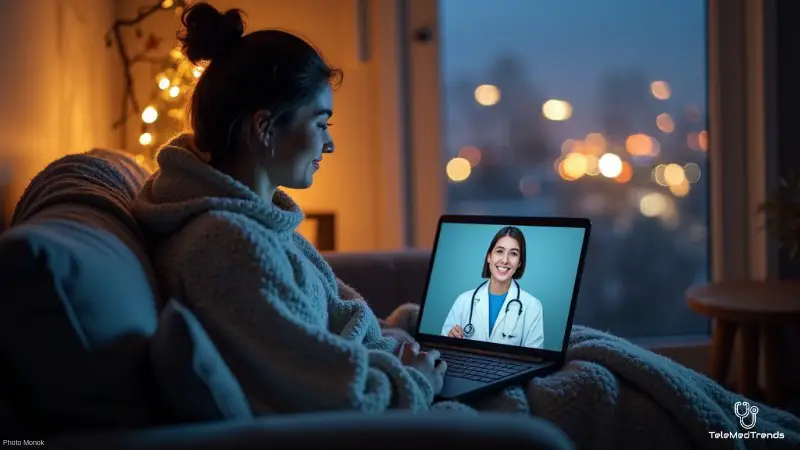As powerful weather disturbances, such as Winter Storm Blair, continue to wreak havoc across the United States, the growing importance of telemedicine in responding to these emergencies becomes increasingly evident.
With millions of individuals confined indoors due to severe climatic conditions, telemedicine is a critical resource in delivering essential medical care and support to those affected.
This includes facilitating remote consultations with healthcare professionals, managing medications, and monitoring patients with chronic medical issues.
Furthermore, online healthcare solutions help ease the strain on emergency services and hospitals by reducing non-urgent visits, enabling patients to receive timely treatment from the comfort and safety of their homes.
In times of crisis, digital care ensures that medical support is accessible, even when traditional healthcare settings are overwhelmed or inaccessible.
Key Takeaways
Telemedicine plays a crucial role in delivering essential medical care and support to individuals affected by winter storms.
- Telemedicine facilitates remote consultations, medication management, and monitoring for patients with chronic conditions.
- Online healthcare solutions reduce the strain on emergency services and hospitals by minimizing non-urgent visits.
- Healthcare providers must prepare for virtual consultations by investing in technology infrastructure, training staff, and establishing clear protocols.
Preparing for virtual consultations
To guarantee a smooth transition to telemedicine during winter storms, healthcare providers must be ready to adapt to remote care delivery.
Such preparation involves investing in reliable technology infrastructure, training staff to use virtual communication tools effectively, and establishing clear protocols for remote consultations.
Equally important is educating patients about the benefits of telehealth and guiding them on how to navigate digital platforms for accessing medical support.
Guides for clinicians
For health professionals, providing effective remote care services during winter storms requires careful planning and execution.
This entails developing a clear plan for prioritizing patients with urgent needs, managing communication channels, and ensuring smooth coordination between healthcare teams.
By adhering to established guidelines and best practices, medical practitioners can guarantee that patients receive high-quality care, even in the face of extreme weather-related challenges.
As severe meteorological events become more frequent and intense, health experts, institutions, and medical teams must develop a comprehensive plan to guarantee the seamless delivery of telemedicine services during emergencies.






